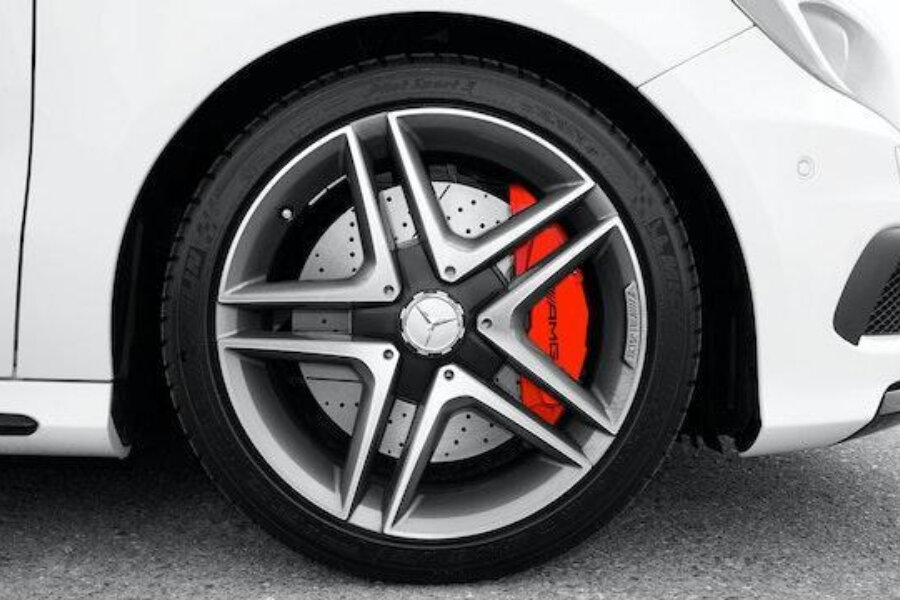Technological advancement has brought many changes to the modern car. Unlike vehicles in the past, which required full mechanical operation, the modern-day car has many electrical components. These components help with the monitoring and control of vehicles while handling them.
Vehicle sensors are among the electrical components in modern vehicles. They aid in monitoring the car’s condition and notify users to make suitable adjustments. This article outlines the various motor vehicle sensors and their functions.
Table of Contents
What are vehicle sensors?
Global car sensor market trends
Functions of vehicle sensors
Types of vehicle sensors
Advantages and disadvantages of car sensors
Frequently asked questions
Final thoughts
What are vehicle sensors?

Vehicle sensors or car sensors are electronic devices that track different aspects of the vehicle. They can monitor the car’s temperature, pressure, and speed, and notify the driver to make appropriate adjustments. They can also send information automatically to the electronic control unit (ECU) to make the necessary changes.
There are many types of car sensors designed for different functions. They are fixed in different car parts, including the engine, fuel tank, exhaust manifold, and combustion chamber.
Global car sensor market trends
The global automobile sensor market was valued at US $10.10 billion in 2021 and is set to hit the US $15.6 billion mark by 2028. It is projected to grow at a compound annual growth rate (CAGR) of 6.38%.
The rapid market growth results from the benefits of sensors. They help drivers monitor the fuel consumption of vehicles, their speed, and when to repair different car parts. Furthermore, they warn drivers of impending danger by detecting obstacles and weather changes.
The global market for vehicle sensors is projected to grow in 2023 and beyond as motorists embrace digitized automobiles for easy and safe driving. Besides, the sensors are crucial in curbing road accidents by sending warnings to drivers.
Functions of vehicle sensors
The primary function of car sensors is to detect changes in the functioning and conditions of a car and send the information to the ECU. The electronic control unit can make the necessary adjustment or send a warning to the driver to make appropriate adjustments.
Some functions of different sensors include:
- Monitoring various aspects of a car such as temperature, amount of oxygen, and speed
- Sending information to the ECU to make suitable adjustments automatically or warn the driver
- Notifying the driver when to carry out routine maintenance on the vehicle
- Detecting the presence of harmful gases such as nitrogen dioxide in the exhaust and warn the driver to take safety measures
- Ensuring fuel mixture in the tank ignites correctly to avoid wastage
Types of vehicle sensors
There are many types of vehicle sensors on the market today. They are designed for different functions, ranging from monitoring fuel consumption to the air condition and the speed of the car. They include the following:
Air-flow sensor
The air-flow sensor monitors the density of air in the engine’s combustion chamber. This helps it maintain the correct ratio of air–fuel mixture for maximum energy production. Low amounts of oxygen lead to incomplete combustion of fuel, causing waste.
This sensor helps minimize fuel waste and curb engine failure.
Engine knock sensor
The engine knock sensor is placed in the combustion chamber of the engine. It detects faulty fuel ignition, which may cause knocking and interfere with engine efficiency.

When the fuel air mixture ignites before the plug sparks, the engine knock sensor warns the driver to make an appropriate adjustment.
Engine speed sensor
This device tracks the engine speed by monitoring the position and speed of the crankshaft. Fitted on the shaft, it detects its position and transmits the information to the ECU, which determines the timing for fuel injections.
This helps the ECU activate the spark plug in time to produce a spark for fuel ignition.
Camshaft position sensor
This device monitors the camshaft position and speed. It detects the opening and closing of the camshaft valves and senses when they approach the top dead center (TDC). The camshaft position sensor works with the engine sensor to ensure correct fuel ignition.
Manifold absolute pressure (MAP) sensor
The MAP sensor monitors the vehicle’s manifold pressure and relays the information to the engine computer. This ensures the correct air–fuel ratio for optimal energy production. It also notifies the ECU on fuel wastage.
Speed sensor
The vehicle speed sensor (VSS) monitors wheel speed. It sends the information to the engine control unit, which modifies the air–fuel ratio and ignition timing to regulate the speed.

Voltage sensor
The voltage sensor manages the wheel speed and ensures it is increased or decreased appropriately. When the vehicle speed reaches its maximum, the sensor relays the information to the electronic unit to stop the car, so as to avoid engine damage.
Oxygen sensor
The oxygen sensor tracks oxygen levels in your engine. Located adjacent to the exhaust manifold, it compares the oxygen level in the engine with the outside to ensure there is enough for optimum fuel consumption.
Throttle position sensor
The throttle position sensor (TPS) is located in the butterfly shaft and monitors the engine’s air intake. It measures the extent to which the throttle valve is open or closed to gauge the amount of air intake. A further push downward of the pedal means a higher air intake, and the sensor signals the ECU accordingly.
Temperature sensor
Also known as the coolant temperature sensor, this device monitors the engine coolant temperature. If the readings are high, it sends them to the engine control unit, which adjusts fuel ignition to regulate the temperature.
Rain sensor

A car rain sensor detects rainfall and relays the message to the electronic control system. The ECU sends the windscreen wiper to prevent entry of rainwater to the car interior. It also enhances visibility by keeping the windscreen clear.
Advantages and disadvantages of car sensors
Vehicle sensors help drivers ride safely and warn them of impending danger. Here are some advantages and disadvantages of car sensors.
Advantages
- They help drivers detect damaged components
- They help maintain the engine
- Automatic vehicle control makes driving easier
- They send warnings to drivers and help avoid accidents
- The ECU makes appropriate adjustments in time to minimize vehicle damage and fuel wastage
Disadvantages
- Faulty sensors lead to engine damage
- They are expensive to install and maintain
- Low quality sensors require frequent replacement which is expensive
- They only detect obstacles in front or behind the car but fail to detect those on the sides
Frequently asked questions
What is a car sensor?
A car sensor is an electronic device that tracks different aspects of the vehicle and relays the information to the ECU or warns the driver to make appropriate changes.
What are the functions of car sensors?
Car sensors monitor changes in different vehicle aspects and relay the information to the ECU for appropriate adjustments or timely warning to the driver.
What are the main car engine sensors?
There are many car engine sensors. The major ones which ensure the engine is well maintained include the engine speed sensor, coolant sensor, camshaft sensor, and air-fuel sensor.
Is a temperature sensor the same as a fuel temperature sensor?
No. The temperature sensor monitors how hot the engine is while the fuel temperature sensor monitors the engine fuel temperature.
What is the most important sensor in a car?
The engine speed sensor, oxygen sensor, and mass airflow sensors are important since they ensure efficient driving, safety, and engine maintenance.
Final thoughts
Car sensors make driving easier and safer for drivers. They also improve car maintenance by detecting faulty parts and sending warnings to drivers. The right choice of car sensors is crucial in vehicle maintenance and fuel conservation. Moreover, they improve road safety through obstruction sensing.
Choose the right vehicle sensors for cars and improve their functionality.



